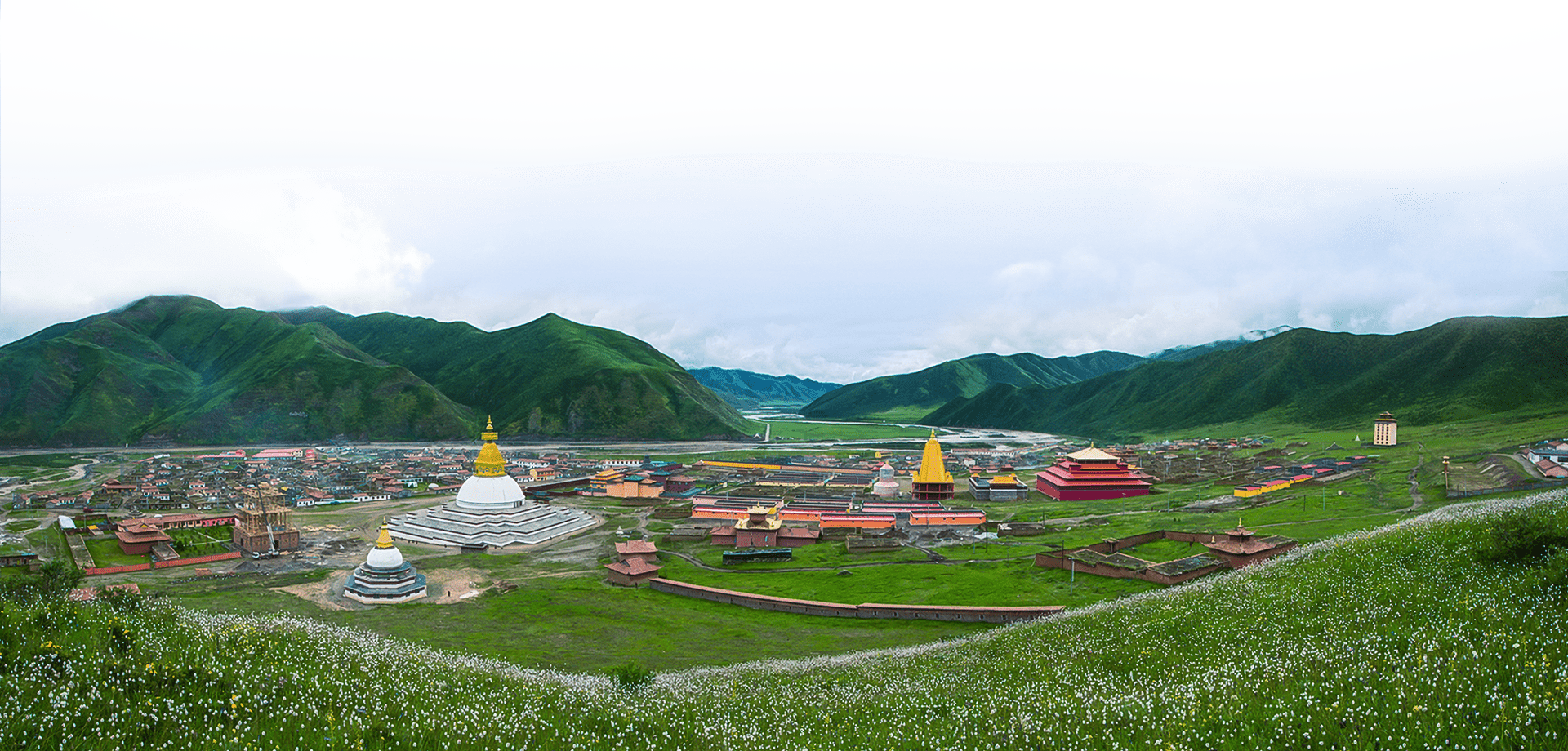Manjushrimitra
MAÑJUSHRĪMITRA (’Jam dPal bShes gNyen) was born in a brahman family in the city of Dvikrama to the west of Bodhgayā in India. His father was Sādhushāstrī, and his mother was Pradīpālokā. He became a scholar of all the five scholarly fields.
In a pure vision, Mañjushrī gave him this prophetic advice: “O son of good family, if you want to attain the result of Buddhahood in this very life, go to the Shītavana charnel ground.” Mañjushrīmitra went there and received teachings from Prahevajra for seventy-five years. Prahevajra told him:
The nature of the mind is Buddha from the beginning.
Mind, like space, has no birth or cessation.
Having perfectly realized the meaning of the oneness of all phenomena,
to remain in it, without seeking, is the meditation.
Mañjushrīmitra realized the meaning of Prahevajra’s teaching and expressed his realization to him:
I am Mañjushrīmitra.
I have attained the accomplishment of Yamāntaka.
I have realized the great equalness of saṃsāra and nirvāṇa.
All-knowing primordial wisdom is arisen in me.
When Prahevajra attained nirvāṇa in the midst of wondrous signs, Mañjushrīmitra beheld Prahevajra in the sky in the midst of a mass of light, and he uttered this lament:
Alas, alack, alas! O Vast Expanse!
If the light of the teacher’s lamp is obscured,
Who will dispel the darkness of the world?
From the mass of light with the sound of a thunderclap came a golden casket the size of a thumbnail. In the air the casket circumambulated Mañjushrīmitra thrice. Then it descended into the palm of his right hand. Upon opening it, he found the testament of Prahevajra, Three Words That Penetrate the Essence, written in blue malachite liquid on a leaf made of five precious substances. Just by seeing it he attained a realization equal to that of Prahevajra. Then Mañjushrīmitra classified the 6,400,000 verses of Dzogpa Chenpo into three categories (sDe):
- The teachings that emphasize the way the mind “dwells” he categorized as Semde
- The teachings that emphasize freedom from efforts he categorized as Longde
- The teachings that emphasize the essential points he categorized as Me-ngagde
Mañjushrīmitra divided Nyingthig, the most extraordinary teachings of Me-ngagde into two groups:
- The teachings of the oral transmission (sNyan rGyud)
- The expository tantras (bShad rGyud)
He noted down in writing the teachings of the oral transmission. But for the expository tantras, he found no worthy disciple to whom he could pass them on, so he concealed them in a boulder marked with a crossed dorje (vajra) to the northeast of Bodhgayā.
He spent one hundred and nine years at the Sosadvīpa charnel ground west of Bodhgayā, remaining in contemplation, practicing esoteric disciplines with countless ḍākinīs, and giving them teachings. There he transmitted Dzogpa Chenpo teachings to Shrīsiṃha.
At the end of his life, amid wondrous signs, sounds, rays, and lights, he dissolved into the radiant body. Because of the devotional prayers of Shrīsiṃha, the testament of Mañjushrīmitra, Gom-nyam Trukpa (The Six Experiences of Meditation) descended into the hands of Shrīsiṃha. It includes these lines:
O son of good family! If you wish to see the continuity of the naked absolute awareness,
[a] seek the object of awareness [clear sky]
[b] press the points of the body [by posture],
[c] close the way of going and coming [breathing],
[d] focus on the target [ultimate sphere],
[e] rely on the unmoving [of body, eyes, and awareness], and
[f] hold the vast space [the nature of awareness itself].
Masters Shrīsiṃha and Buddhajñāna are the disciples of Mañjushrīmitra and some even think that they may be the same person.
Later on, Mañjushrīmitra was reborn by lotus birth at a place called Serkyi Metok Ki Gyenpe Ling (Island Arrayed with Golden Flowers) in western India and became known as “the later Mañjushrīmitra.” He gave the teachings of Dzogpa Chenpo to Guru Padmasambhava and master Āryadeva.
Tulku Thondup
“Masters of Meditation and Miracles: Lives of the Great Buddhist Masters of India and Tibet”










